| |
|
 | |
| MaltaWildPlants.com by Stephen Mifsud |

|
| |
|
|
 |  |  |  |
| External Links: |
|
Hypericum triquetrifolium (Wavy-leaved Saint John's Wort) |
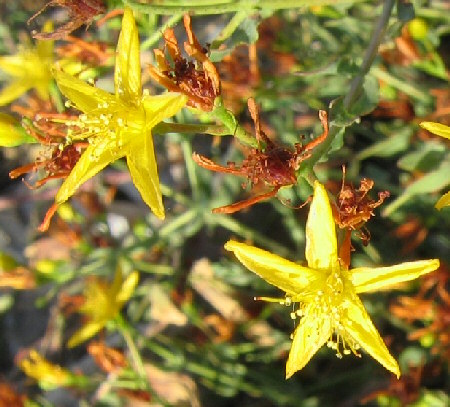
Hypericum triquetrifolium (CLUSIACEAE.)
Images for this profile are taken from the Maltese Islands after year 2000. |
|
| Nomenclature |
Species name : | Hypericum triquetrifolium Turra | Authority : | Antonio Turra, Italy, (1730 - 1796) | Synonyms :
(basionym or principal syn.) |
|
Plant Family : | Clusiaceae Juss. (= Guttiferae )
(Saint John's Wort Family) | English name(s) : | Wavy-leaved Saint John's Wort, Curled-leaved Saint John's Wort, Tangled Hypericum | Maltese name(s) : | Fexfiex tar-Raba | Status for Malta : | Indigenous. Present on the Maltese islands before man | Name Derivation : |
Hypericum: Derived from hyper- meaning above and eikon meaning an icon or picture alluding to very old practice of placing flowers above an image in the house to ward off evil spirits at the midsummer festival of Walpurgisnacht, which later became the feast of St. John held in late June when flowers are in bloom, and later took the name of St. John`s wort. (Greek origin ); 2 = Derived from hyper, "above," and eikon, "picture," from the old practice of placing flowers above an image in the house to ward off evil spirits at the midsummer festival of Walpurgisnacht, which later became the feast of St. John held in late June when they are in bloom, and thus took the name of St. John`s wort (Greek);.
triquetrifolium: a leaf which shape has three angles or corners at the base. (Latin origin ); 2 = a leaf "folium" which have a "triquetrous" shape that in this case means three-angled, with three concave faces (Latin).
| Remarks : | |
|
| Morphology and structure |
PLANT STRUCTURE: |
Character | Growth Form | Branching | Surface |
Description | | | |
General
Picture |  |  | 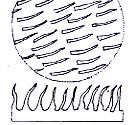 |
|
LEAVES: |
Character | Arrangement | Attachment | Venation |
Description | | | |
General
Picture |  |  |  |
| |
Character | Leaf Shape | Leaf Margin | Remarks |
Description | | | Leaf Glands Leaf have translucent glands (like perforations) at the central part and black glands at the leaf margins and tip. |
General
Picture |  | 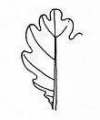 |  |
|
FLOWERS: |
Character | Colour | Basic Flower Type | No. of Petals | No. of Sepals |
Description | Yolk yellow | | 5 | 5 |
General
Picture | | 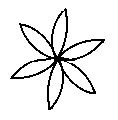 |  |  |
| |
Character | Inflorescence | Description | Ovary | Stamens |
Description | | Sepals 5, small; petals 5, broad lanceolate, slightly overlapping, bright yellow; stamens in clusters of about 20 to 40 surrounding carpels; carpels 3, within stamens, with slender style and inconspicuous club-shaped stigma. | | |
General
Picture |  |  | 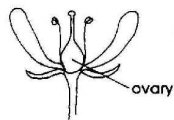 | 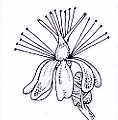 |
| |
Character | Scent | Average Flower Size | Pollen Colour | Other Notes |
Description | YES Flower (or whole plant) has a spicy scent, described as offensive to some. | 10mm | Yellow | - |
|
SEEDS: |
Character | No. Per Fruit | Shape | Size | Colour |
Description | about 50 | Slender, linear seeds | 2mm | Gray to pale brown |
General
Picture |  |  |  |  |
|
FRUIT AND OTHER BOTANICAL DATA: |
Character | Fruit Type | Colour of Fruit | Subterranean Parts | Other Notes |
Description | | Reddish Brown | | - |
General
Picture | 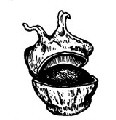 |  |  |  |
|
|
| Plant description and characters | |
Life Cycle: | Annual. |
Growth Form: | THEROPHYTE (annual plants, herbaceous) |
Habitat: | Dry fields, Olive Groves, Vineyards. |
Frequency: | Common |
Localities in Malta: | Common in dry fields in summer as at Qormi, Siggiewi, Buskett, Mtarfa, Dwejra (Malta) and Bingemma. |
Plant Height: | 25-35cm. |
| Jun-Sep |
Protection in Malta: | Not legally protected till the last update of this website (2/Mar/2022) |
Red List 1989: | Not listed in the Red Data Book of the Maltese Islands |
Poison: | |
This annual plant forms a small, delicate shrub with highly branched stems. The stems are slender and glabrous, and in July - when the climate gets very dry - it starts getting a reddish colour. Every branching stem forms several flowering branches that are spread out nearly perpendicularl to the main stem axis. The arrangement of branches or leaves are an excellent example of opposite and decussate, that is a pair of oppositely growing stems or leaves are perpendicular to the plane of the next pair above (or below).
The leaves are very small 5-12mm long with the stipule being the largest. The lower/adult leaves have a wavy margin (hence its name 'crispum') but this feature is not much shown in the upper young leaves. Leaves are sessile, narrow lance shaped with two small auricles at their base and usually bend up vertically. More interesting features about the leaves are the translucent and tiny glands that when seen against light looks like uniform perforations in the leaf. Also the leaves often have black dots or glands at its tip or margins, but much less in number from the translucent ones.
At the end of the multi branched stems are the bright yellow flowers, about 8-10mm in diameter and found in loose panicles. They are made up of 5 tiny, sepals (1mm long) and 5 thin, spreading, blunt-tipped petals. From the center there are a cluster of stamens with a very slender filament and kidney-shaped, yellow anther sometimes with a black spot. Amongst the stamens there are 3 styles with a dark brown stigma arranged as V-shape between each other. When the flowers dries off they turn into a brown colour and persists for few days. This gives the plant a mixed yellow and brown appearance. The buds look like small yellow bullets.
The fruit is a small, rust brown, splitting capsule, about 4 mm in length and spherical with an elongated tip. It holds several slender small seeds.
|
|
| Information, uses and other details |
< Nativity and origin
This plant originated from the Mediterranean and is native to:
Northern Africa: (Algeria - Constantine; Libya [ n.e.]; Tunisia )
Western Asia: (Cyprus; Egypt - Sinai; Iran [ s.]; Iraq; Israel; Jordan; Lebanon; Syria; Turkey)
Southeastern Europe: (Albania; Greece [ incl. Crete]; Italy [ incl. Sicily]; Malta; Yugoslavia )
Southwestern Europe: (France [ s.]; Gibraltar; Spain - Baleares, Malaga )
[ WWW-26]
Active Constituents and their properties:
The plant contains at least the following active constituents with the activity of some, described. Since this plant is related to the more medicinally famous and important H. perforatum, it may also share other similar constituents. [SM]. More detailed information and properties about Hypericum perforatum can be seen from the links section below
Hypericin ( AntiHIV; Antianemic - IC50=5 ug/ml; Antibacterial; Anticytomegalic; Antidepressant; Antiflu;
Antiherpetic; Antileukemic; Antiproliferative - IC50=1.7 ug/ml; Antiretroviral - 50 ug;
Antistomatitic; Antiviral - 5 ug/ml (with UV); Antiviral - EC50=0.8; Anxiolytic; Cytotoxic; CD50=1.2ug/ml; Herbicide; Insecticide; Larvicide; MAO-Inhibitor; Pesticide; Photodermatotic; Phototoxic - 3 g/kg; Protein-Kinase-Inhibitor - IC50=1.7 ug/ml; Tonic; Tranquilizer; Tremorigenic )
Pseudohypericin ( Antileukemic; Antiviral )
Glycoside-hyperin ( Aldose-Reductase-Inhibitor; Antibacterial; Anti-inflammatory; Antioxidant; Antiradicular;
Antitussive; Antiviral; Capillarifortificant; Capillarigenic; Diuretic; Hepatoprotective - IC80=30 ug/ml; Hypotensive;
Pesticide )
Hyperforat / Hyperforin ( Antibacterial; Antibiotic; Pesticide; Sedative )
[ WWW-73, WWW-66]
If one takes the same properties from any 2 or more of the 4 constituents listed above it gives the following common properties: Antibacterial, Antiviral, Pesticide, Antileukemic, Sedative/Tranquilizer [SM]
Additionally, a research in Italy [ 308] gave the volatile constituents of the leaves and flowers of Hypericum triquetrifolium. The abstract states that the flower and leaf oil of Hypericum triquetrifolium from Calabria (Italy) were studied by GasChromatography (GC) and GC-MS (Mass Spectrometery). The major components identified in each oil were n-nonane (8%, 15%), beta-pinene (8%, 4%), alph-pinene (13%, 10%), myrcene (16%, 5%), beta-caryophyllene (5%, 11%), germacrene-D (10%, 13%), sabinene (13%, 3%) and caryophyllene oxide (5%, 12%) in the leaf and flower oils, respectively. The aerial parts of the same plant were also analyzed by SPME. The SPME analysis showed higher yields of undecane (14%, 10%) and beta-caryophyllene (14%, 10%) in comparison with the corresponding hydrodistillation oils, in addition to alpha-pinene, beta-pinene, sabinene and myrcene, amounting to (9%, 6%), (7%, 4%), (1%, 9%), (1%, 10%) for the leaves and flowers, respectively. [ 308]
Toxic Notes
Ingestion of the plants by animals can lead to primary photosensitisation from absorption of the plant pigment hypericin, producing a condition known as hypericism. At least four species have been implicated, namely H. aethiopicum, H. crispum, H. perforatum, and H. revolutum. Photosensitivity from ingestion of the plants has not been observed in humans, but claimed success in treating vitiligo by oral administration and topical application of extracts of the plants. It has been reported a case of contact dermatitis from St John's wort. A bullous patch test reaction was observed. [ WWW-27]
Several Hypericum L. species are well-known for their photosensitising activity in animals following ingestion, but although extracts of H. perforatum L. are used orally by humans in the treatment of mild depression, photosensitisation is only rarely reported. Other genera, especially those found in tropical regions have well documented uses in folk medicine for a variety of skin affections. Topical activity against scabies, other ectoparasites, and ringworm is reported as well as against other causes of itch. Some insecticidal compounds have been characterised. The various oils and gum-resins obtained from members of this family also have reputations as healing agents for cuts and wounds as well as for ulcers. Occasional reports of contact dermatitis have appeared but the identity of the contact allergens / irritants is largely unknown. [ WWW-27]
The plant is more toxic to animals than to man. Most affected animals are sheep and then cattle and horses. Mode of poison uptake is by ingestion through grazing or consumption of fresh cuttings or contaminated hay or fodder.
The main toxic compound is hypericin, a red fluorescent pigment responsible for causing primary photosensitization in animals. The entire plant is toxic, particularly the flowers. Drying the plant does not modify significantly its toxicity. Toxic doses not known.
There is a latent period between ingestion of the plant and manifestation of clinical signs, varying from several hours to several days. The effects occur exclusively when the animal is exposed to sunlight. General effects include anorexia, restlessness, prostration, occasionally convulsions. There are also gastrointestinal manifestations namely jaundice, (intermittent), constipation or mild colic diarrhoea. [ WWW-74]
Local effects are as follows:
Late onset (from several hours to 1-3 days) of photodermatitis in fine, unpigmented skin causing a red blotchy discoloration (like red wine sediment), severe pruritus, oedema with serous exudate and formation of black sticky scabs resulting in hard cracked skin. The affected animals become very sensitive to touch, with hyperirritability, and extreme hyperaesthesia. Also possibility of stomatitis, keratitis, kerato-conjunctivitis, opacity of the cornea, risk of secondary infection, necrosis in and gangrene of cutaneous tissue. Luckily if treatment is given, mortality is rare.
Other toxic effects are lesions, principally cutaneous (exudative dermatitis), degeneration of the liver and inflammation of the gall bladder.
Regards treatment there is no known antidote at present, but the animal can be treated only by symptomatic and supportive care as follows:
+ Place animal in shade for several days.
+ Treat cutaneous sores with topical antiseptics and antibiotics.
+ Administer desensitizing drugs (to reduce hyperallergenicity) and pain killers.
+ Note that anti-inflammatory drugs, nicotmamide (factor PP), and antihistamines appear to be ineffective in such a case.
[ WWW-74]
Medicinal properties
The fact that the plant has hypericin [ WWW-73], it gives it a wide range of medicinal properties, but the most important are the antiviral and antimicrobial properties amongst others. A full list of research and studies (mostly medical and pharmacological) about the related species H. perforatum can be followed in the links section below. Despite interesting, such content is too vast to place on this plant profile on H. crispum.
A table of the medicinal properties of Hypericin and other main constituents of the plant are tabled below [ WWW-73, WWW-66]
| Antianemic |
Pertaining to factors or substances that prevent or correct anaemic conditions. [ WWW-57] |
| Antibacterial |
A substance that destroys bacteria or suppresses their growth or reproduction.
[ WWW-57] |
| Antidepressant |
An agent that stimulates the mood of a depressed patient, including tricyclic antidepressants and monoamine oxidase inhibitors. [ WWW-32] |
| Antiherpetic |
Used against Herpes disease. [SM] |
| AntiHIV |
Agents used to treat aids and/or stop the spread of the HIV infection. These do not include drugs used to treat symptoms or opportunistic infections associated with aids. [ WWW-57] |
| Anti-inflammatory |
An agent which counteracts or suppresses inflammation. [ WWW-57 ] |
| Antiproliferative |
Counteracting a process of proliferation (= the reproduction or multiplication of similar forms, especially of cells and morbid cysts) [ WWW-57] |
| Capillarifortificant |
Used to strengthen (fortifies) the blood capilleries [SM] |
| Hepatoprotective |
Protects the liver [SM] |
| Sedative |
A medication with tranquilising properties. Most sedatives (tranquillisers) can also promote sleep. [ WWW-57] |
Hypericin and pseudohypericin exhibit anti-HIV activity. Intense phototoxicities limit the use of the injectable drug; studies still going on in Israel. [ WWW-73].
Specific medical / pharmalogical properties are given in the study/research abstracts below.
Hypericum triquetrifolium exhibits antinociceptive activity in the mouse.
The aim of the present study was to investigate the antinociceptive activity of Hypericum triquetrifolium Turra. extract. The lyophilized extract was administered to male Swiss mice. Formalin paw test and tail flick tests were used for the evaluation of the antinociceptive activity. Plant extract (10, 25, 50 and 60 mg kg(-1), i.p.) (n = 16-24 for each group) or vehicle (n = 27) was administered 30 min before the subplantar formalin injection. In the tail flick test, mice were examined for latency to withdraw their tails from a noxious thermal stimulus using a tail flick meter (n = 8 for each group). The effects of the extract on sensorimotor performance was also assessed (n = 16-24 for each group). The extract caused a significant dose-related inhibition of the first phase (50, 60 mg kg(-1), i.p.) and second phase (10, 25, 50 and 60 mg kg(-1), i.p.) of formalin induced hindpaw licking. Additionally, the extract administration (50, 60 mg kg(-1), i.p.) increased the tail flick latencies. No significant change was observed in any of the treatment groups in the sensorimotor performance test. The observed antinociceptive activity of the extract may be due to its noradrenaline and serotonin reuptake blocking activity. Moreover, the probable Anti-inflammatory activity of the extract may play a role in the dose-related inhibition of the second phase of formalin paw test. [ 315]
Hypericum triquetrifolium Extract exhibits Anti-inflammatory activity in the rat.
The aim of the present study was to explore the probable Anti-inflammatory effect of Hypericum triquetrifolium Turra. in a rat model of carrageenan induced inflammation. Male Wistar rats were treated intraperitoneally with 0.4% dimethylsulphoxide (DMSO) (as control group) and H. triquetrifolium extract (25, 50, 60 mg/kg), 30 min before 0.1 ml 1% carrageenan injection. Paw volume was measured before and 1, 2, 3, 4, 5 and 6 h after the injection of carrageenan. The results are expressed as the mean+/-s.e. mean and the statistical significance of differences between groups was analyzed by One Way Analysis of Variance (ANOVA). The intraplantar injection of carrageenan caused a time-dependent paw edema in the rat although saline injection caused no swelling. Intraperitoneal administration of H. triquetrifolium extract (25, 50, 60 mg/kg) inhibited paw swelling dose-dependently at 2, 3, 4, 5 and 6 h after carrageenan injection (P<0.05). We can conclude that H. triquetrifolium extract may exert an Anti-inflammatory effect in rats. [ 314]
Antioxidant activity of methanolic extract of Hypericum triquetrifolium aerial part.
The antioxidant activity of the methanol extract of Hypericum triquetrifolium Turra (Hypericaceae) aerial part and of flavonoids isolated therein, I3,II8-biapigenin, quercetin-3-O-galactoside, kaempferol-3-O-glycoside, (-)-epicatechin and hypericin, was evaluated. The IC(50) resulted between 0.062 and 1 mg/ml. [ 313]
Antioxidant and cytotoxic activities of Hypericum sp. on brine shrimps and human cancer cell lines.
Ten different samples of five Hypericum sp. were tested on brine shrimps, human colon carcinoma and human hepatoma cell lines for their cytotoxic activities. H. triquetrifolium Turra. (Rafina) showed the highest activity (LC50 = 22 mg/mL) on brine shrimps, while the extracts of the other nine samples showed significant to moderate activities (LC50 from 37 to 107 mg/mL). H. empetrifolium Wild. (Parnon) showed the highest activity in human colon carcinoma and human hepatoma cell lines, with LC50 values 29 and 25.1 mg/mL, respectively, while the LC50 values of the other samples were more than 45 mg/mL. It is very interesting to observe that most Hypericum samples showed good antioxidant activity in vitro. [ 312]
Determination of hypericin content in Hypericum triquetrifolium Turra (Hypericaceae) growing wild in Jordan.
Hypericin content of methanolic extracts of dried flowers, leaves, stems, and roots of Hypericum triquetrifolium (Turra) were determined by HPLC. Conversion of protohypericin to hypericin was achieved by exposing samples to light for 30 min immediately before HPLC analysis. External standard calibration was used to quantify hypericin. Leaves showed the highest hypericin content of 0.36% w/w. Total aerial parts contained 0.43% w/w of hypericin. The relatively high hypericin content of the H. triquetrifolium in this study encourages the introduction, cultivation, and biological evaluation of hypericum specie in Jordan. [ 311]
The antimicrobial activity of essential oils of Hypericum scabrum, Hypericum scabroides and Hypericum triquetrifolium.
The essential oils of Hypericum scabrum, Hypericum scabroides and Hypericum triquetrifolium were studied for the first time for their antimicrobial activity against nine organisms. All the essential oils exhibited some broad spectrum antibacterial activity, at a concentration of 80 microg/mL. The essential oils of Hypericum species showed antibacterial activity against the tested organisms and a yeast. [ 310]
In Vitro antibacterial activities of 3 Hypericum species from west Anatolia
Godze Elgim et al. showed that extracts H. triquetrifolium, H. perforatum and H. empetrifolium showed in vitro antibacterial properties againsts 4 Gram +ve (incl Staphylococci) and 4 Gram -ve bacteria (incl E.Coli). Read the whole excerpt (by Godze Elgim Meral and N Ulku Karabay) in pdf acrobat format. (Click here)
Pesticide properties from the plant's extract
Plant extracts. Plant extracts of Cleome quinquenervia, Haplophyllum tuberculatum, Hypericum triquetrifolium and Rubia tinctorum at 10 percent concentration killed a significant number of eggs and juveniles of M. javanica. Preplanting application improved the plant height and shoot dry weight of tomato plants compared with those treated at planting or postplanting and the untreated control. [ 309]
|
|
| | |

